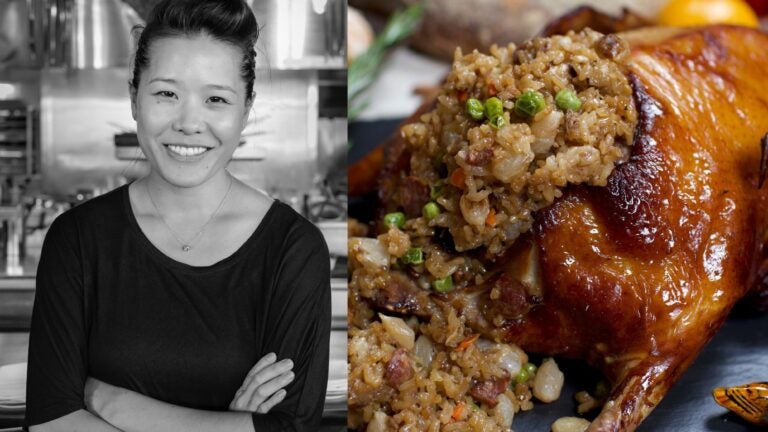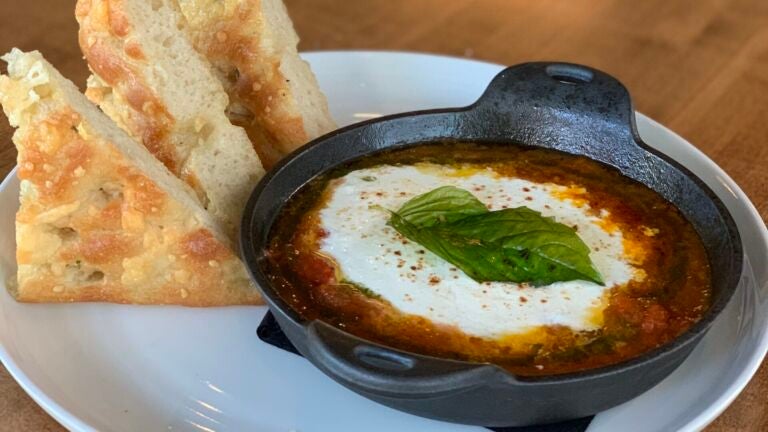Sign up for The Dish
Stay up to date on the latest food news from Boston.com.

As the winter holidays come closer, you may be thinking of what to serve guests at your next party. We asked Boston area chefs for their favorite holiday dishes and a recipe to share with Boston.com readers.
Tracy Chang, chef and owner of Pagu in Cambridge, offered sticky rice duck, a Taiwanese dish that she learned in part from her grandmother. According to Chang, the flavor and character of the dish make it a good addition to a festive celebration.
“It’s not something that I crave in the summertime,” she said. “It’s a very [warming dish]. I also think it’s special because you can’t really go out and buy it somewhere… It’s a homey dish, rather than a restaurant banquet dish.” While sticky rice duck does not grace the menu of many Boston area eateries, it can be ordered at Pagu from now through Lunar New Year, Chang said.
The recipe features Jurgielewicz duck served with short grain rice, which is tossed with sausage, shallots, peas, carrots, and shiitake mushrooms. The meat is rubbed with shio koji, a flavor enhancer, giving the skin a golden color and allowing it to caramelize. Chang would enjoy eating the dish over Thanksgiving, Christmas, New Year’s, and Lunar New Year celebrations. She remembers watching her grandmother, who operated two restaurants, prepare it.
“It was a really special treat,” Chang said. “A lot of my cousins would be watching TV or playing video games, and I would just go in the kitchen with her. I have these awesome memories of standing on the little stool, because I wasn’t tall enough to see. She’d give me the spatula and be like, ‘stir this, while I’m doing this.’ She’d explain everything to me and let me taste everything.”
Pagu is an eatery that was named a semifinalist in the category for outstanding restaurant by the James Beard Foundation this year. It’s a place where Chang wants visitors to feel welcome, that feels international and where a guest can overhear many different languages being spoken. Chang said that she thinks about what it means to be in the hospitality industry, and part of her work involves uplifting the immigrant community that plays an important role in it.
“I thought about what my purpose [is] in being a restaurant owner,” Chang said. “It’s not just making food or creating great parties, a great space. I think if you look at the people who run restaurants day in and day out, it’s immigrants.” She added that understanding the personal stories of immigrants is key. “If we want the industry to improve and push forward, to be more diverse and dynamic than it has been… That’s something that we need to talk about.”
Ingredients
Instructions
Ingredients
Instructions
Share with us: Do you have a favorite holiday recipe? Tell us how you make it and what makes it special. Fill out the survey below or e-mail us at [email protected], and your response may be featured in a future Boston.com article.
Stay up to date on the latest food news from Boston.com.

Stay up to date with everything Boston. Receive the latest news and breaking updates, straight from our newsroom to your inbox.
Be civil. Be kind.
Read our full community guidelines.